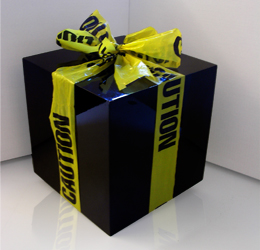Design & Disposition
Posted on December 15, 2010 | posted by:Design is reactive. A designer perceives a societal disconnect and seeks to objectify it. By navigating through the design process a solution is synthesized. An object’s form is released into the real world, where it develops a new, active form. I would like to focus on manipulating form beyond the manifest of its original context.As the onus of artifact shifts from creator to consumer, the push back challenges the notions of design. Individuals no longer want to be designed for; they want to be designed with. If not individually factored in, the consumer questions and challenges the form and its intended purposes.
Designers cannot account for everything through the initial process of design thinking. Re-framing is crucial to the practice. A designer can never fully predict how individual users will experience their objects. He or she can position, but transmutations leave an object’s ultimate reception open to the users’ interpretation. Disposition occurs not in the present state of an object, but when a propensity to change in a certain way under certain conditions exists.
Object form and natural form are manipulated into an active, ever-evolving state, a state of wilderness, moving away from the isomorphism that it previously embodied. Since the result of dis-positional thinking cannot be known in advance, the process of repeatedly reframing the active form must take place for the object to maintain its intended effect.
One cannot predict disposition or design for it. The wilderness is a perpetual, self-emerging state, to which one can only react. Instructions for growth, or protocol can be encouraged, but there is no real order or control to that growth, supporting the argument for social impact metrics in the design field. Through conditioning we can attempt to direct the active form.
Acts of piracy against form should not be discouraged. They can flush out latency in a system, counter obsolescence or allow society to face certain realities through testing and thereby realize form in all its potential. Contemporary society is full of manufactured truths. Disposition is a rebuttal to the on-going conversation of design.
